1 - Expected post-Chinafy results
How to Choose the Best CDN for China [Updated in 2024]
In this article, we'll explore the key factors to consider when choosing a CDN provider in China, some common limitations CDN operators face in China,and actionable strategies on how to optimise website performance for Chinese users.
What are the popular CDN providers in China?
China's CDN market is dominated by several key players, each offering unique features and capabilities tailored to the Chinese market.
Some of the popular CDN providers in China include:
Read more about the “What are the considerations when choosing a CDN provider in China?”
When assessing a China CDN provider, three critical performance metrics must be considered:
Latency
Load time, and
Uptime
These factors directly influence the user experience and play a pivotal role in determining the success of your website in the Chinese market.
Latency
Latency is the time lapse between a user's content request and its actual delivery.
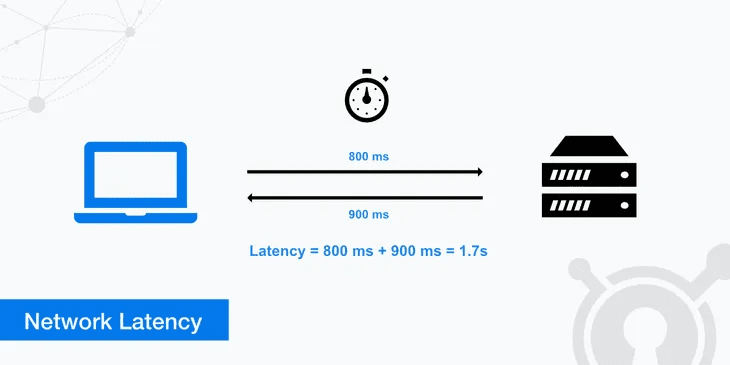
Image from KeyCDN
In China, where internet speeds are typically slower, due to infrastructure limitations, latency becomes a significant concern. Opting for a CDN provider with strategically-positioned and widely distributed servers within China is crucial to mitigate latency issues and ensure prompt content delivery.
Load Time
Load time measures the duration required for a website or web page to load completely.
If your page exceeds a loading time of three seconds, the likelihood of bounce nearly triples.
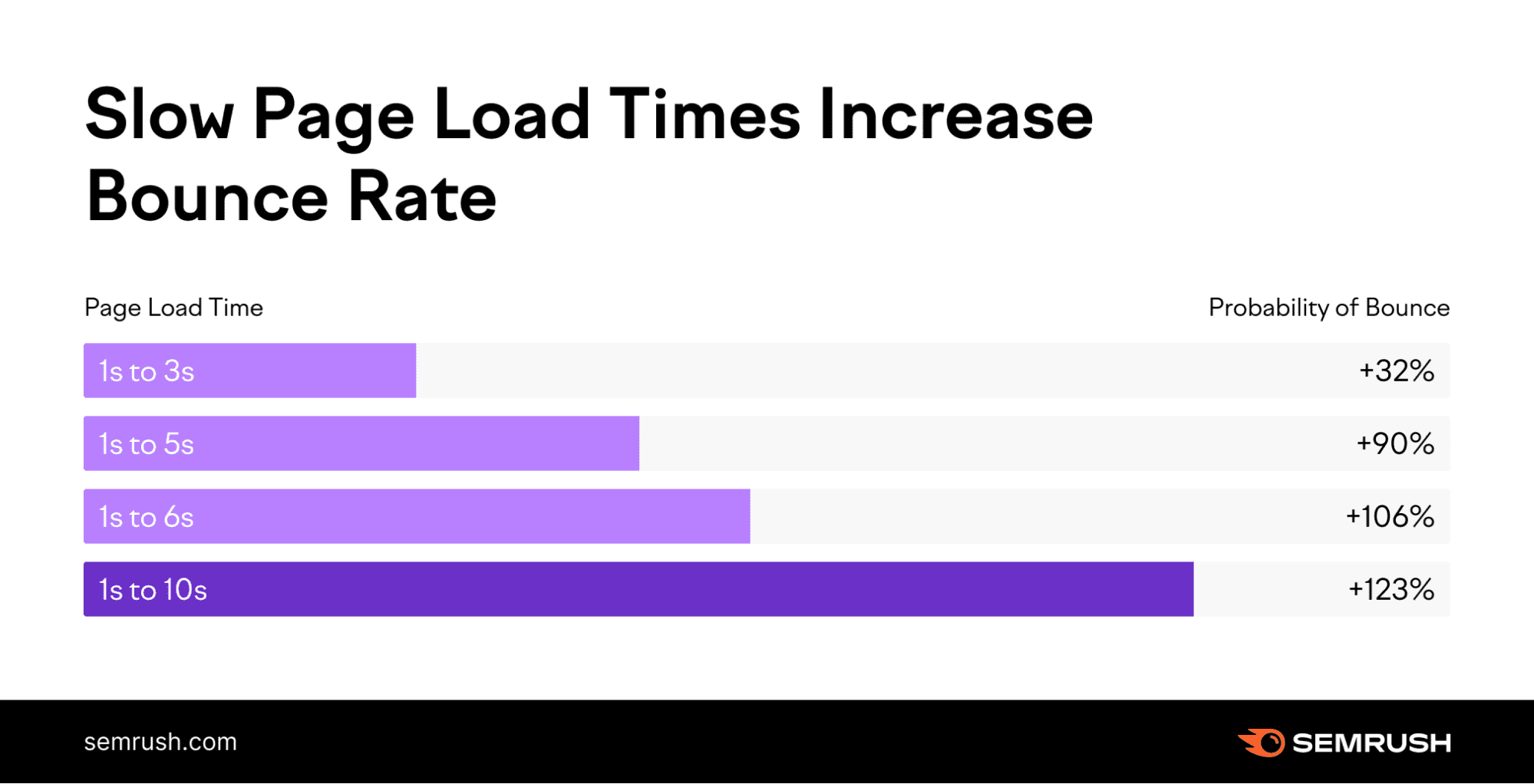
Image from semrush
Sluggish load times can understandably, and universally, result in frustrated users and an increase in bounce rates, both adversely impacting your website's performance and also metrics important to search engines.
That’s why selecting a CDN provider equipped with robust caching mechanisms, optimisation techniques, and consistent performance is fundamental to providing users with a seamless browsing experience.
Uptime
Uptime refers to the duration during which a system remains functional and accessible to users. It is commonly expressed as a percentage of the total expected availability time, which is also referred to as the system's downtime.
It is mistakenly used interchangeably with availability, which is instead a metric that gauges the dependability of user access to a system.
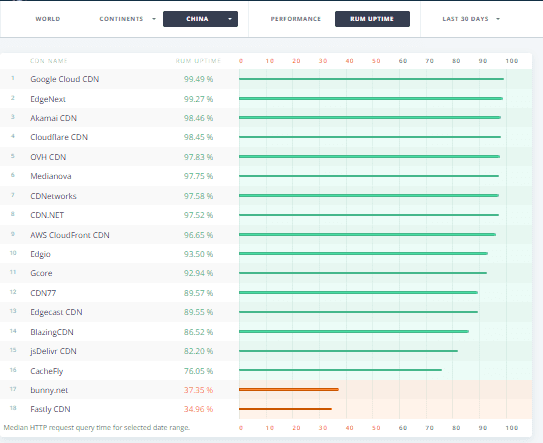
Uptime of CDNs in China. Data from CDNPerf
In China, where network reliability might be variable like anywhere else, downtime can significantly impede content delivery.
Evaluating a CDN provider's uptime guarantee specifically in China and its capacity to scale and consistently handle traffic surges during peak periods is essential to maintain seamless accessibility to your content.
What tools can you use to measure CDN Performance?
Here are some third-party tools that provide performance analytics and user insights of CDN providers in China.
1. Real-time CDN comparison tools
Real-world testing involves generating an apples-to-apples comparison of using different CDN providers to relay content within China. One such example is Netscaler (see a screenshot below).

Response time of Chinese and Western CDNs as of April 2024. Data from Netscaler
2. Website Speed test tools
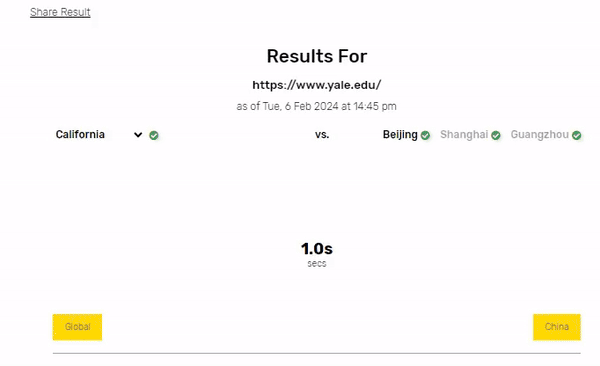
Visual Speed Test Result for yale.edu
Alternatively, web performance testing tools for China, like ChinaSpeedTest or Chinafy’s Visual Speed Test, are able to highlight how fast (or slow) a website loads across five to ten different cities in China.
Should you have a trial or staging link with a provider, you can use tools like this to compare your website across various locations before and after using that specific CDN provider.
3. Review websites

Alibaba Cloud vs.Tencent Cloud. Data from Gartner
It also never hurts to study customer reviews and ratings from websites like Gartner and Techjockey to collect further user insights into the reliability and quality of various CDN services. Chances are, you’re definitely not the first to test and compare different providers.
What are some unique limitations CDNs face in China?
Despite the benefits of enhanced regional delivery, CDNs often fall short in two crucial aspects concerning China.
1. Most global CDNs don’t include servers in China by default
Global CDNs might have distributed nodes, including those near-China.
However, China regulations dictate that no user or provider can offer servers in China without the user first meeting certain requirements. These include but are not limited to, a China business entity, ICP filing or license, PSB filing, China IP address and more.
That’s why, if you’re looking into China web performance specifically and CDNs that perform well for that market - you first have to determine whether or not a provider has near-China CDN nodes , onshore China nodes via a joint partnership (like Akamai, Cloudflare, or AWS) or none in the region at all (like Fastly).
While CDNs with Points of Presence (PoPs) within China may alleviate this to some degree, there are still elements beyond the reach of CDNs and hosting providers that can affect website functionality in China.
However, it’s important to keep in mind that even if you use a leading China CDN - it may not necessarily mean that your entire website will load fast or fully. That leads us to the next point.
2. CDNs don’t address or resolve 3rd party resource compatibility issues in China
Many third party technologies are inaccessible, blocked, or at the very least - load slowly in China.
This includes commonly used libraries, popular plugins, and default components inherent to website building platforms. Modern websites typically rely on a massive number of these third-party resources whether or not the website looks or feels “dynamic”. Examples of third-party resources that may be inaccessible include Google APIs, Vimeo, Youtube, Facebook, among others. Additionally, Other primary and or third party resources may be delivered from networks that perform slowly in China (i.e. Amazon S3).
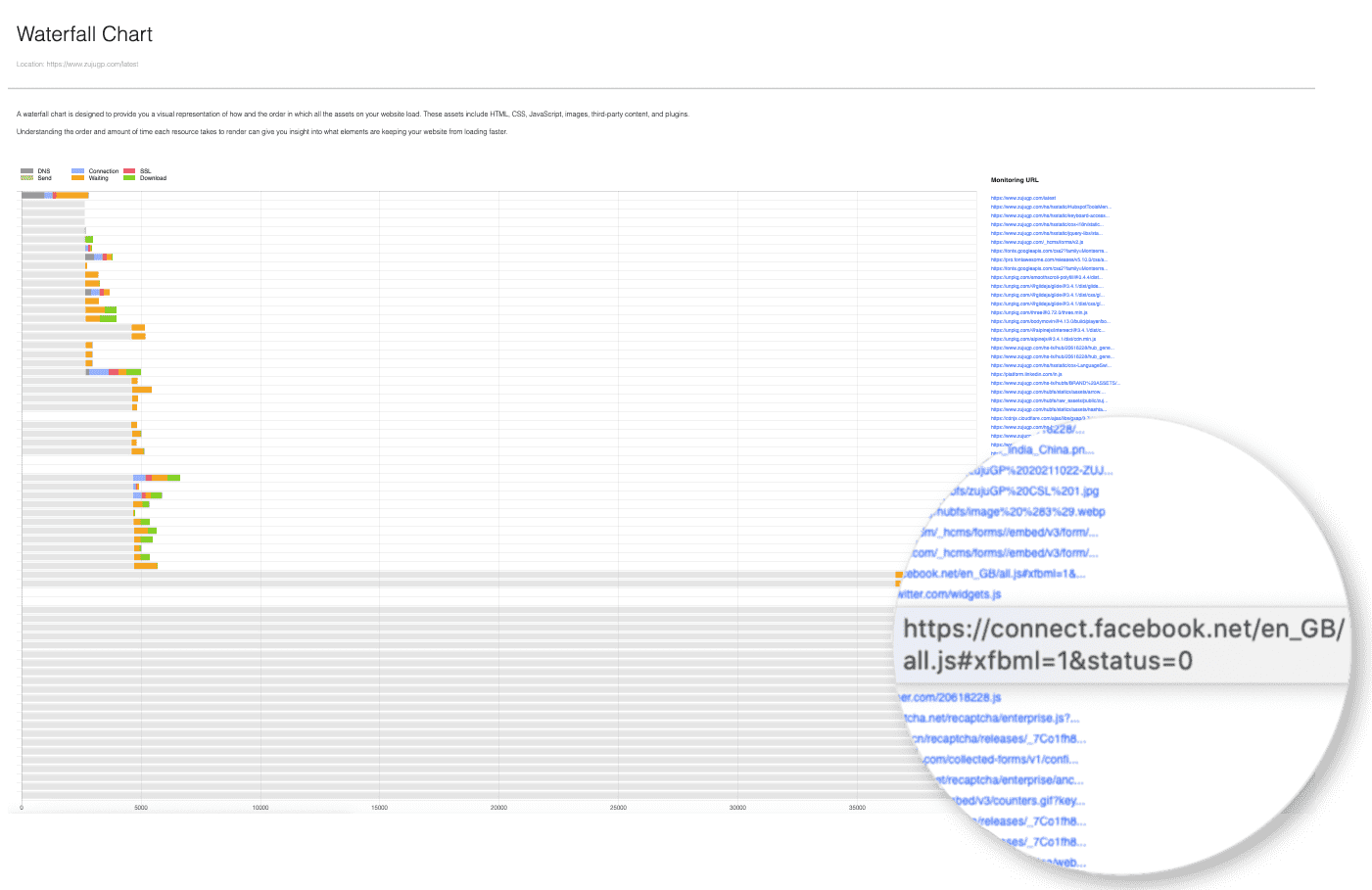
When a browser attempts to load inaccessible or slow resources from China, these resources cause delays in the overall loading process.
The browser continues trying to retrieve the file for a period, leading to what looks like a 'stuck' website. Consequently, the inaccessible resource not only prolongs the total loading time of the website in China but also disrupts the website’s functionality when certain content fails to load after multiple attempts.
How can you optimise your website for China?
There are several approaches to making your website work in China. You could rebuild a website from scratch, manually eliminate the use of many third party resources (though the functionality and status of these evolve), host in China, add a China CDN and make sure to of course as a prerequisite to hosting and use of a China CDN, obtaining the necessary licenses in order to do so. This likely means additional headcount as well, seeing as you will have to manage two versions of your website - one in China, and one outside.
Another option is to bolt on Chinafy to your website. This can be done with websites hosted inside or outside of China, with or without a China CDN.
Chinafy is the only China web compatibility platform that can identify, modify, and substitute incompatible resources (where there are replacements) to help the website load quickly and completely in China. It also identifies slow resources and accelerates them as needed.
This is why many websites using CDNs, or even websites hosted in China, opt in to integrate Chinafy.
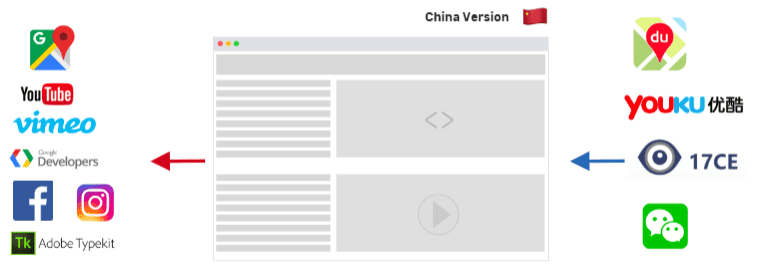
While Chinafy isn't a CDN itself, the platform includes a fully-managed, near-China orChina-friendly CDN* to accelerate primary resources on the website, such as image assets. Should you have a CDN provider of choice, Chinafy can be configured to work alongside your existing CDN stack.
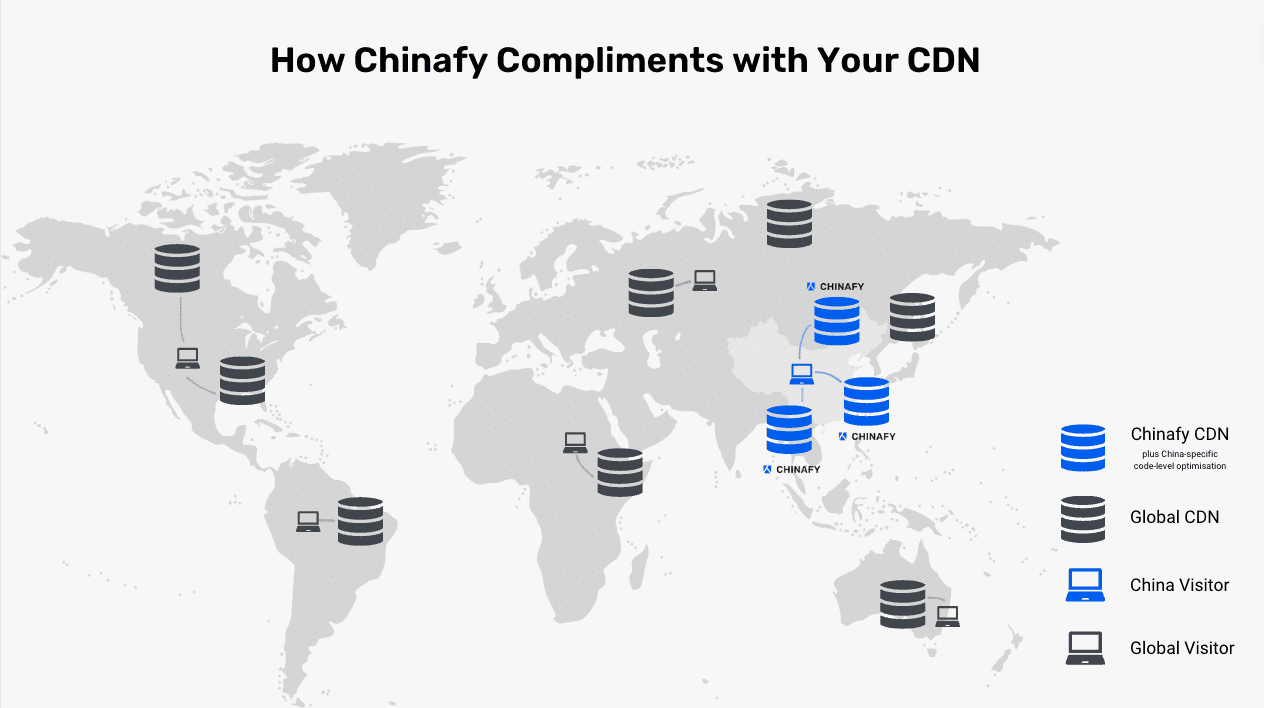
*Prerequisites must be met for use of onshore ChinaCDNs.
How Chinafy works:
Chinafy produces a China-specific version of your site, generated based on publicly accessible HTML, CSS, and JS of your original site. This secondary version of your website is then scanned and optimised by Chinafy. This is done without changing the URL.
Chinafy's Smart Actions employ rule-based optimisation methods to address approximately 75% of the issues stemming from the most commonly blocked or slow resources. It then replaces them with China-friendly equivalents or removes those that are blocked without a China-replacement, ensuring these incompatibilities don't impact the functionality of the rest of the website.
Chinafy then automatically adds China-friendly infrastructure to power the Chinafy version of your websiteThis includes hosting, load balancers and content delivery networks (CDNs) near China
The Chinafy version automatically syncs content changes with your original site, ensuring that any changes are processed and reflected accordingly. Enterprise Chinafy users also benefit from ongoing change management where more complexities and functional changes are involved
The final step is turning on Chinafy using geo-ip-based routing so that all visitors access your website through the same URL. However, based on their IP address - they are sent to the Chinafy version of the website or the original version of their website.
Check out “CDN or Chinafy? Which One Do You Need?”
With Chinafy, websites are 30%-40% faster compared to using near-China or China alone, as Chinafy addresses third party resource compatibility issues that impact the loading process.
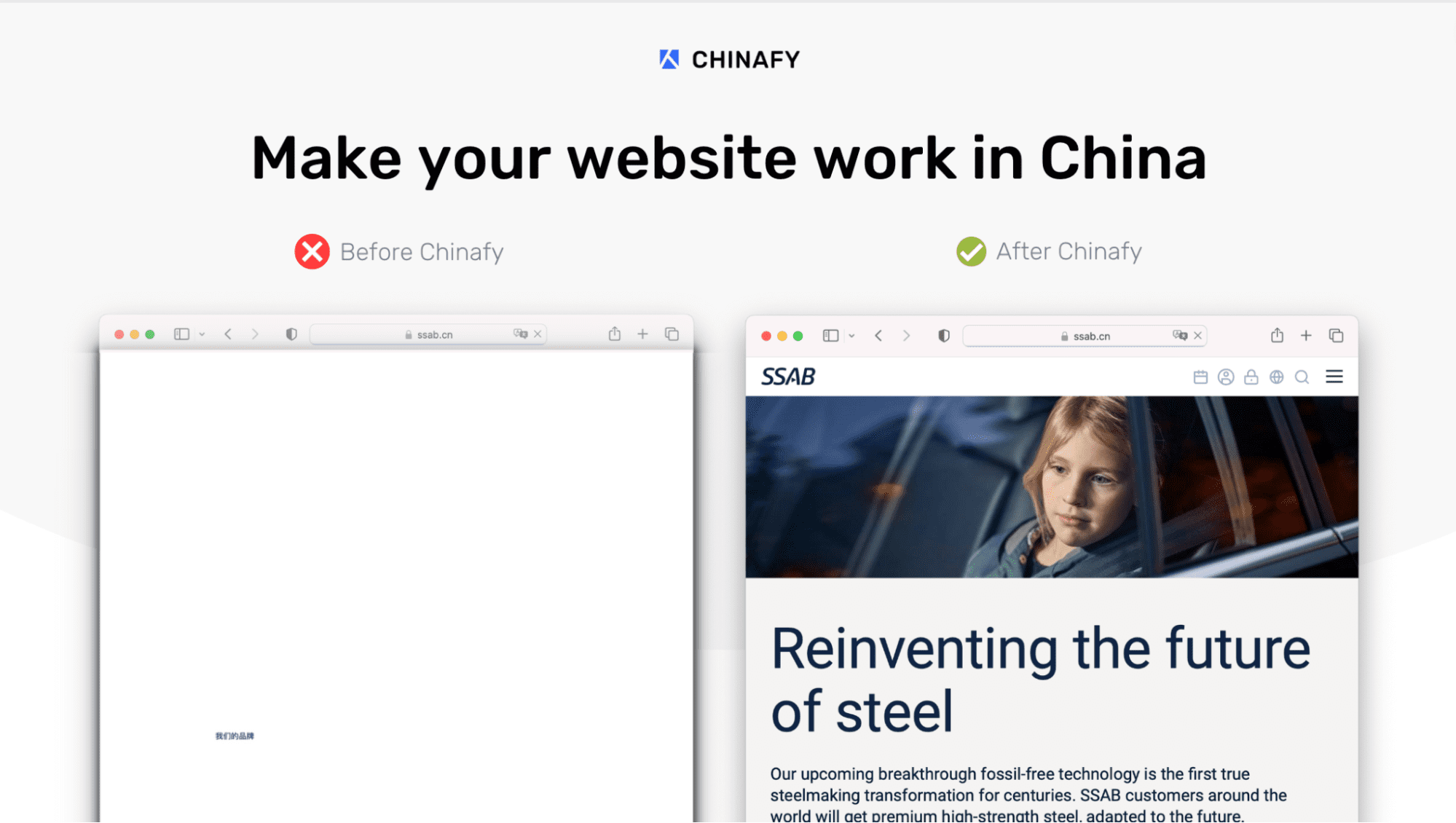
Ready to optimise your website for China? Get Started with Chinafy, today.

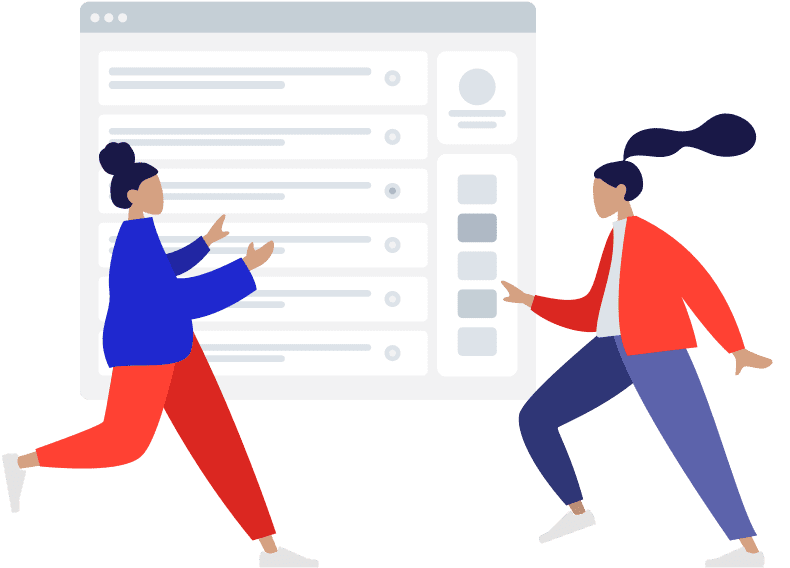

1 - Expected post-Chinafy results






























